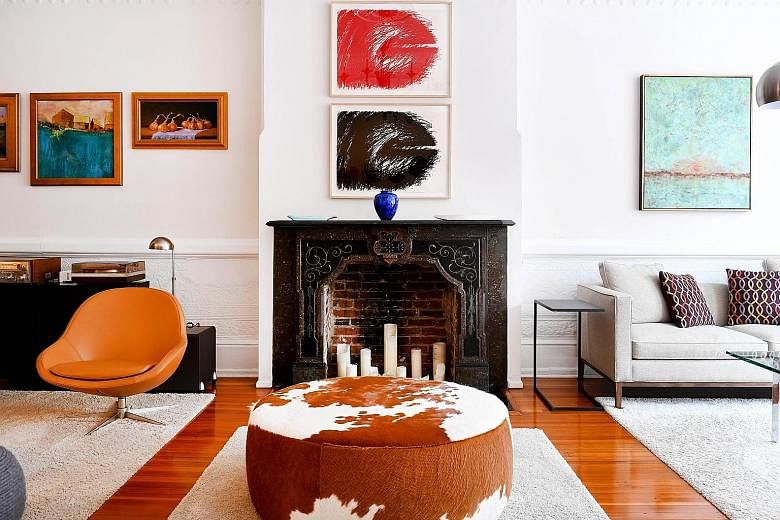WASHINGTON • Mr David Feinstein and Ms Susan Pitman were, technically speaking, city dwellers as 13-year residents in the north-west Washington neighbourhood of Tenleytown. But they were looking for a more urban experience.
In autumn 2010, they walked through a vintage Victorian rowhouse near Logan Circle and fell in love. "Starting with the overall street presence, we thought it was one of the most beautiful blocks in the District," said Mr Feinstein, 49, a partner at Beveridge Seay, a D.C.-based communications firm.
"There's a grand sense to it and... it has its own unique characteristics on the facade - from the plaster casts to the nature of the brickwork - that work in concert with the facades along that row."
The future owners were getting a glimpse of Washington's pedigreed and somewhat mysterious past.
Experts say the three-storey home was designed by one of two respected architects, but they are not certain which.
It could have been Glenn Brown, who designed Washington's Dumbarton Bridge and the National Union Building. Or it could have been T.F. Schneider, who worked with Adolf Cluss, designer of Eastern Market on Capitol Hill and the Smithsonian's Arts and Industries building on the National Mall.
The house was built between 1888 and 1890 for James Ewan. Ewan had three daughters and the home still bears a carved relief of four female hands holding bells. Historians believe the sculpture was a tribute to the Ewan daughters and his wife, giving rise to the home's identification as The House of Four Bells.
The 4,000 sq ft home was historic, but it also had issues. The windows facing the street leaked like sieves and there were structural challenges such as a cracked roof.
After a six-year renovation, the home is now a beautiful blend of the historical and the contemporary.
The home's front facade, foyer and living room remain unchanged except for a long, built-in bench fashioned from lacquered medium-density fibreboard that starts just beyond the front door, extends through the receiving hall and reappears in the kitchen as a banquette.
An oddly configured bathroom on the second level is now two modern baths. Unused bedrooms have been turned into home offices and a large bedroom that became known as the "fire room" because of its fireplace and a partially charred floor became the TV room.
The third level houses the master suite and a master bath with a Japanese twist, a tub and a shower right next to each other. Drawing from the tradition of the "onsen", the wet room allows a user to shower before entering the tub for a relaxing soak.
The owners' tastes in art and decor are also highlighted in the home. Saarinen tulip chairs and Mies van der Rohe Barcelona chairs blend with the vintage plasterwork, crown mouldings and an ornate staircase.
The house closed for US$1.48 million in 2010.
Mr Feinstein is pleased about the way the house presents itself. "It lives up to the expectations," he said. "The grand rooms play grandly and the intimate rooms play cosy."
WASHINGTON POST

